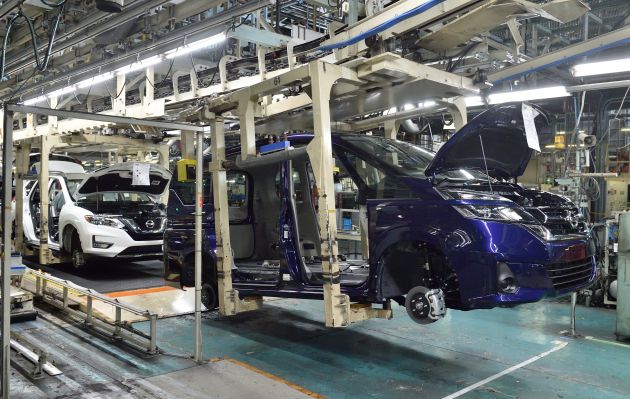Just when you thought things couldn’t get any worse for Nissan, they have – the Japanese carmaker posted a net loss of 670.9 billion yen (RM19.6 billion) for the fiscal year 2024, ending March 31, 2025. The fourth quarter alone was responsible for dragging the company deep into the red, with net loss widening from nine billion yen (RM262.6 million) in the previous quarter to an astounding 676 billion yen (RM19.7 billion).
In response – and under new management – Nissan has kicked off an even more aggressive series of cost-cutting measures under the Re:Nissan banner, targeting savings of 500 billion yen (RM14.6 billion) as it looks to return to profitability by the fiscal year 2026.
Those measures include cutting a whopping 20,000 jobs between FY24 to FY27, including the previously-announced 9,000. This covers direct, indirect and contracted roles in manufacturing, sales, general and administration (SG&A), and even research and development.
Cuts in the manufacturing workforce are to be expected because Nissan is also closing more plants, whittling the total number from the current 17 to just ten. It will also streamline its powertrain facilities and reduce capital expenditure, including cancelling a planned lithium iron phosphate (LFP) battery factory in Kyushu, Japan. All this will enable a targeted fixed cost reduction of 250 billion yen (RM7.3 billion).
The other 250 billion yen will come from variable cost reductions through “accelerating engineering and cost efficiencies while implementing a rigorous governance model,” with a 300-strong dedicated cross-functional transformation office under a so-called chief total delivered cost (TdC) officer empowered to make cost-cutting decisions.
At the same time, Nissan is temporarily halting all advanced and post-FY26 product activities and shifting 3,000 of its workforce towards cost reduction initiatives. It will also reevaluate its supply chain, ordering more parts from fewer vendors to eliminate inefficiencies.
It’s not quite all doom and gloom, because part of this cost-cutting plan also includes shortening its vehicles’ development lead time to 37 months (and each subsequent “family vehicle’s” to just 30 months), ensuring no delays to product launches despite pausing development. This will go hand in hand with a 70% reduction in parts complexity and cutting the number of platforms from 13 to 7 by FY35.
Nissan also teased three new models developed under this process that were not divulged during the new model onslaught in March, including a global C-segment SUV, an Infiniti compact SUV and, most intriguingly, an all-new Skyline. It is unclear if the latter will be a direct replacement for the existing sedan or morph into yet another crossover, just like the new Leaf (and the Skyline’s competitor, the Toyota Crown).
Of course, the new Skyline should not be confused with the next-generation GT-R, development of which is reportedly still ongoing. Nissan added that it will supplement its global product lineup with products from its joint venture with Dongfeng, such as the new N7 and Frontier Pro – both of which have already been confirmed for exports.
Looking to sell your car? Sell it with Carro.





















Nisan can only be saved by marketing REEV on new Datsun 120Y replacement model. Meanwhile next GTR must sell by quantity vs mass consumers friendly car….
New boss from Renault? Waiting with popcorn for when the Jap execs backstabs him too and then send him to jail.
Current Skyline shares its powertrain and drivetrain with Mercedes Benz (the 2.0 turbo 7 speed G Tronic combo) and in return Nissan gave its Navara for rebadge. Sold in Malaysia as Infiniti Q50.
Why should we pity Nissan when they actually made the first EV car on the road the Nissan Leaf in 2008. The biggest problem of Nissan is they didn’t stand firm. If Nissan determined to go for EV they are on par with Tesla and all Chinese EV makers now and no struggle at all. But Nissan gave up on the EV project and go slow instead they put high hope on hybrid. Nissan is the only carmaker had the right concept but didn’t uphold it.